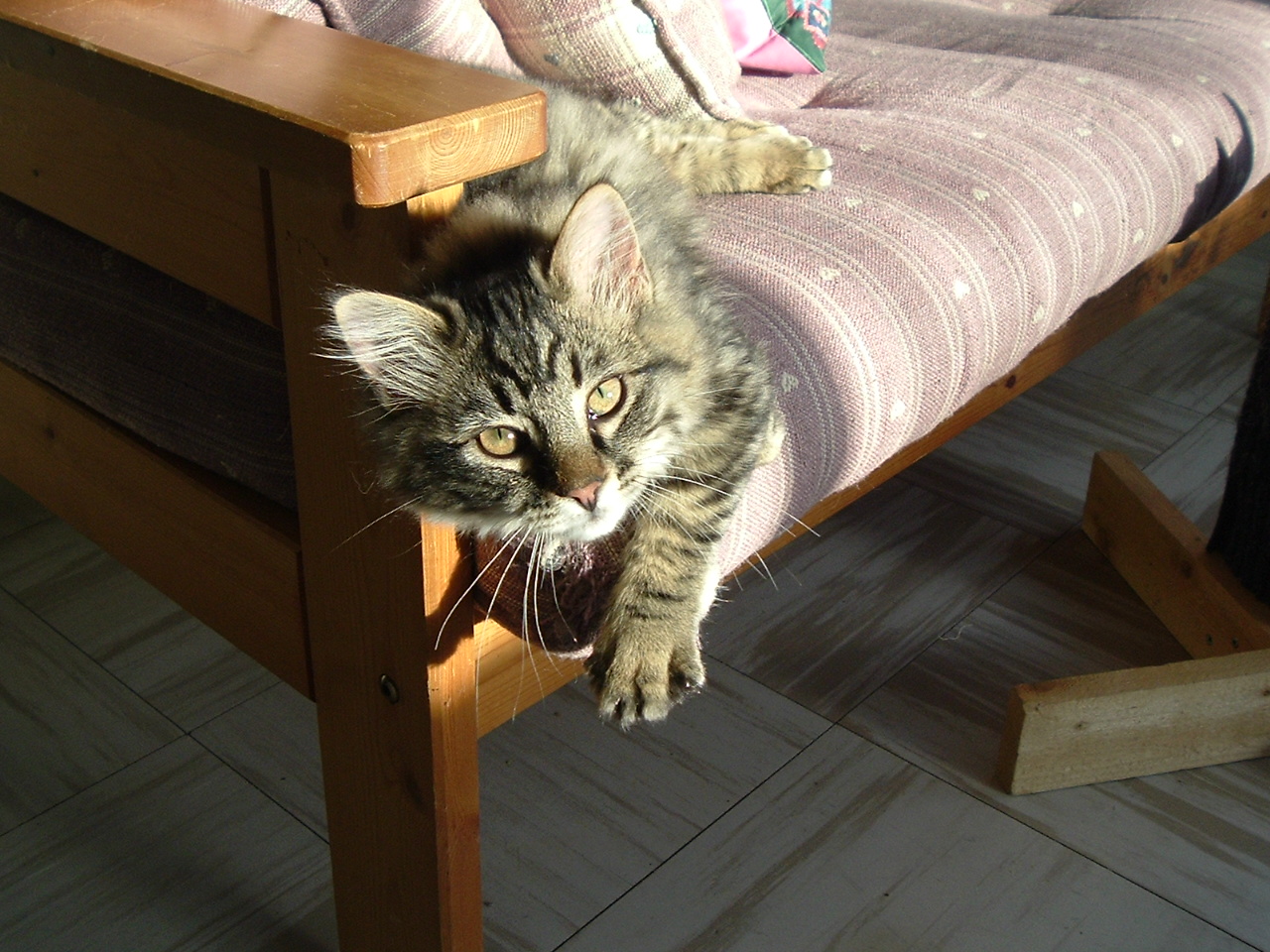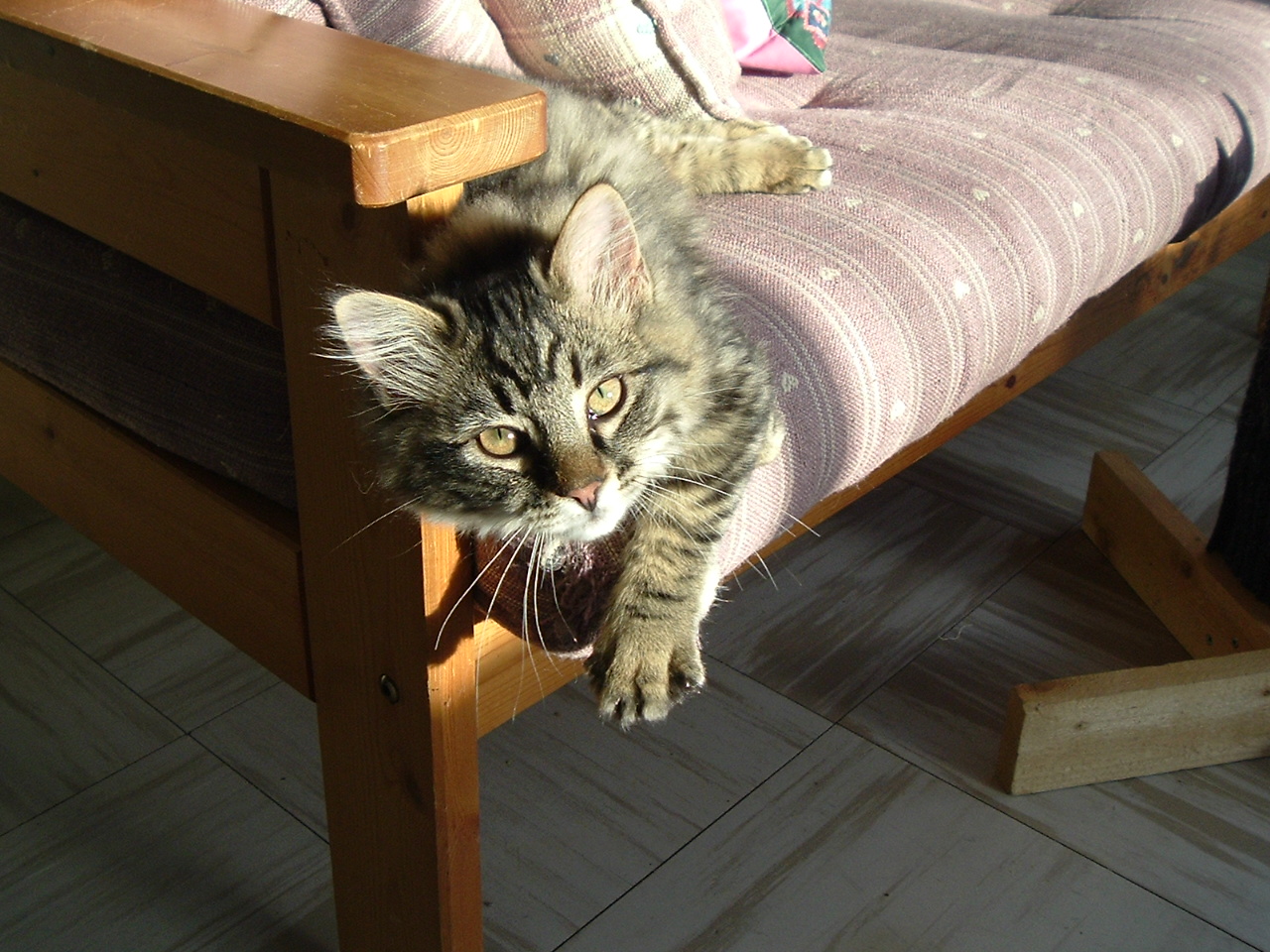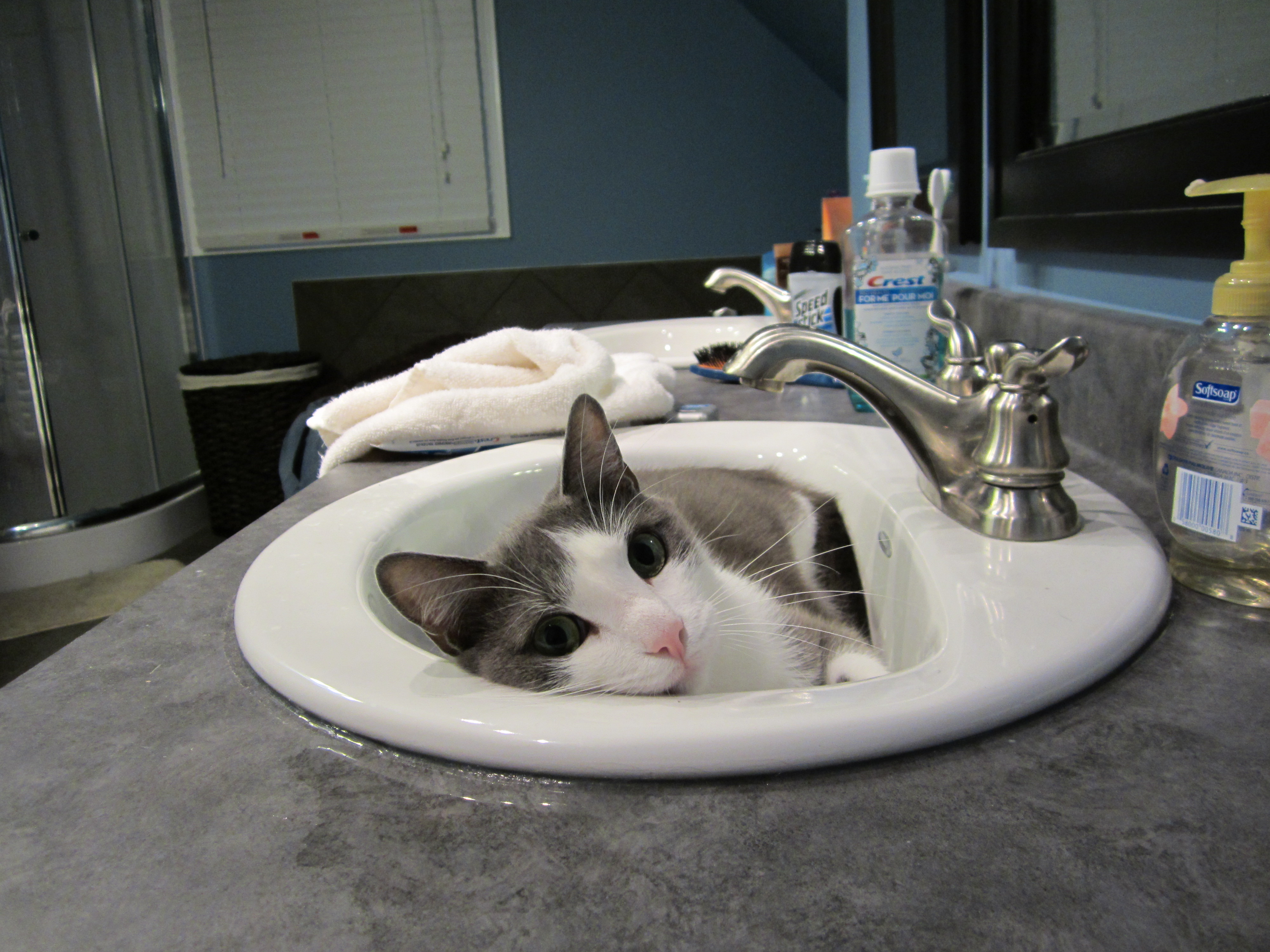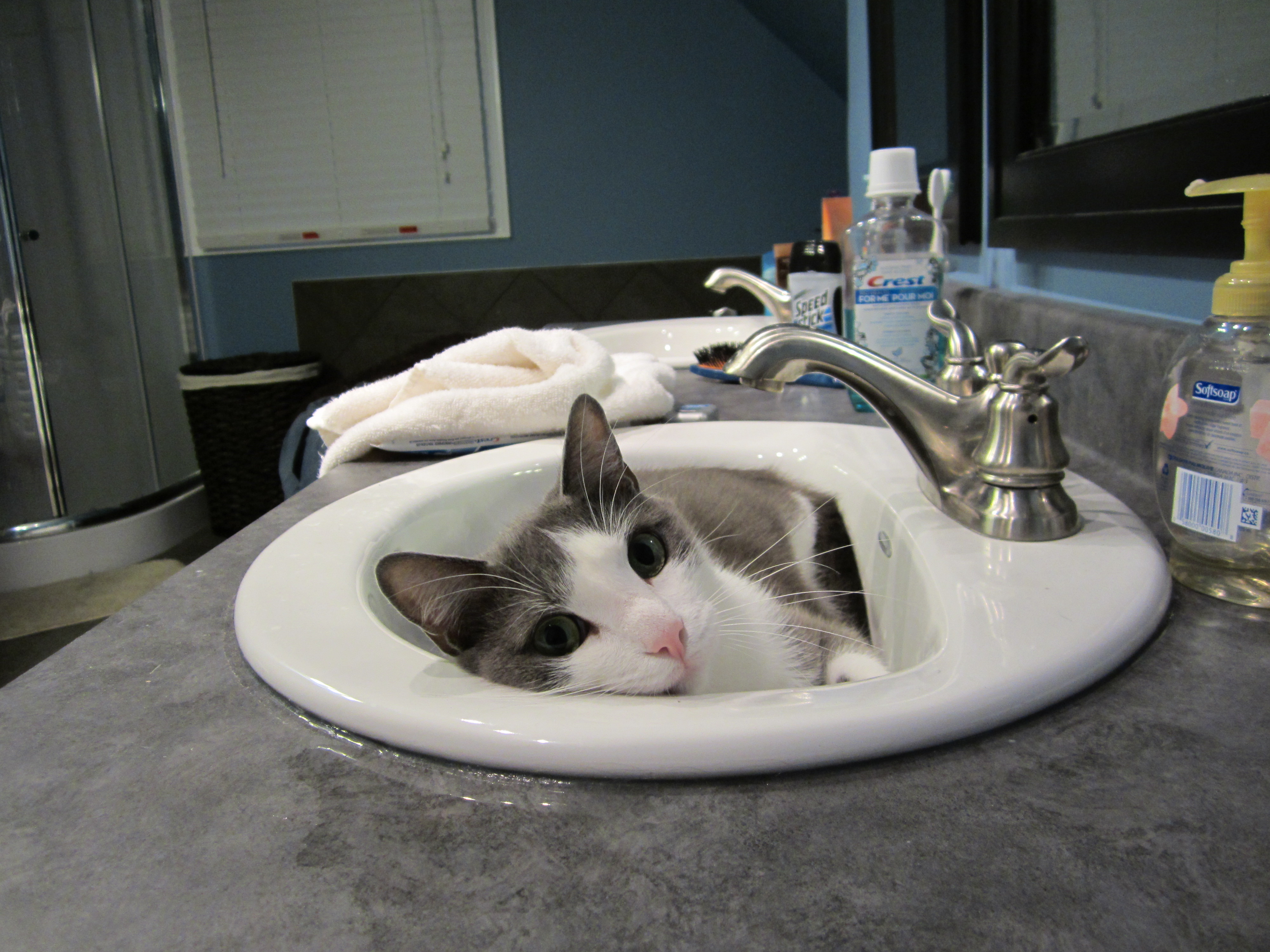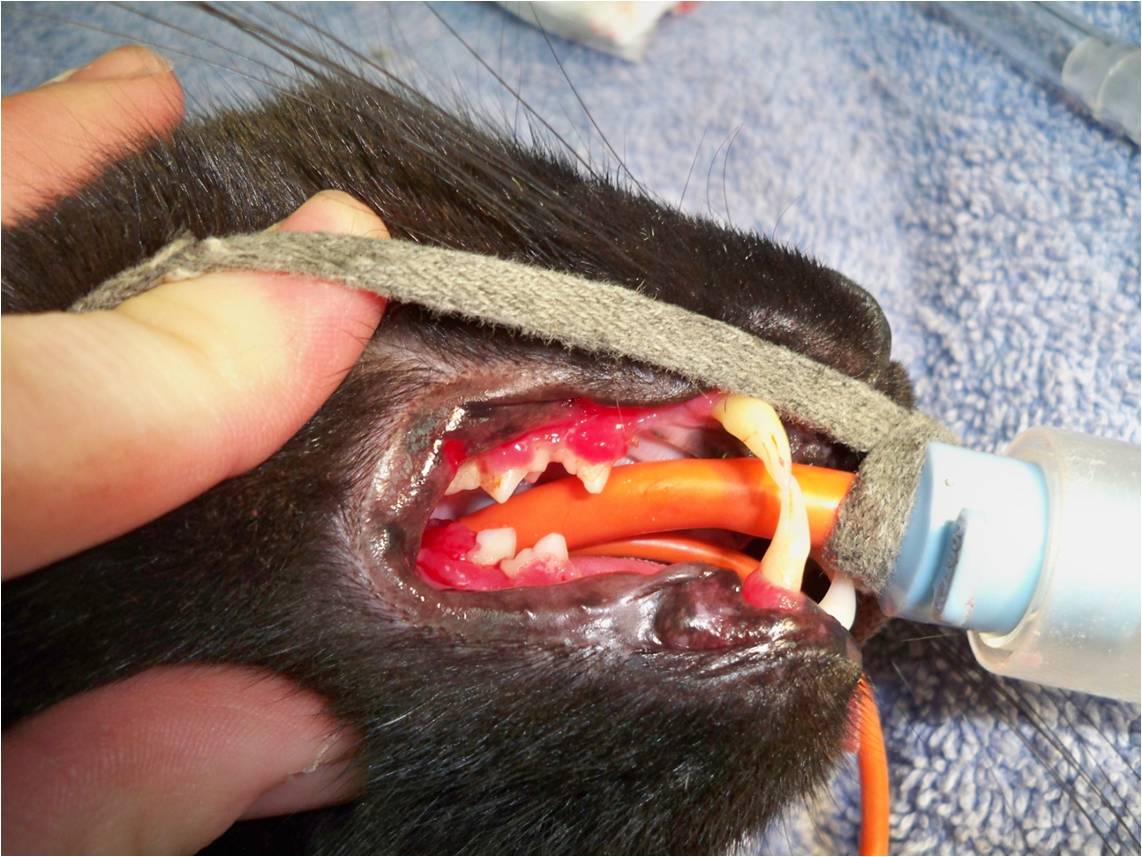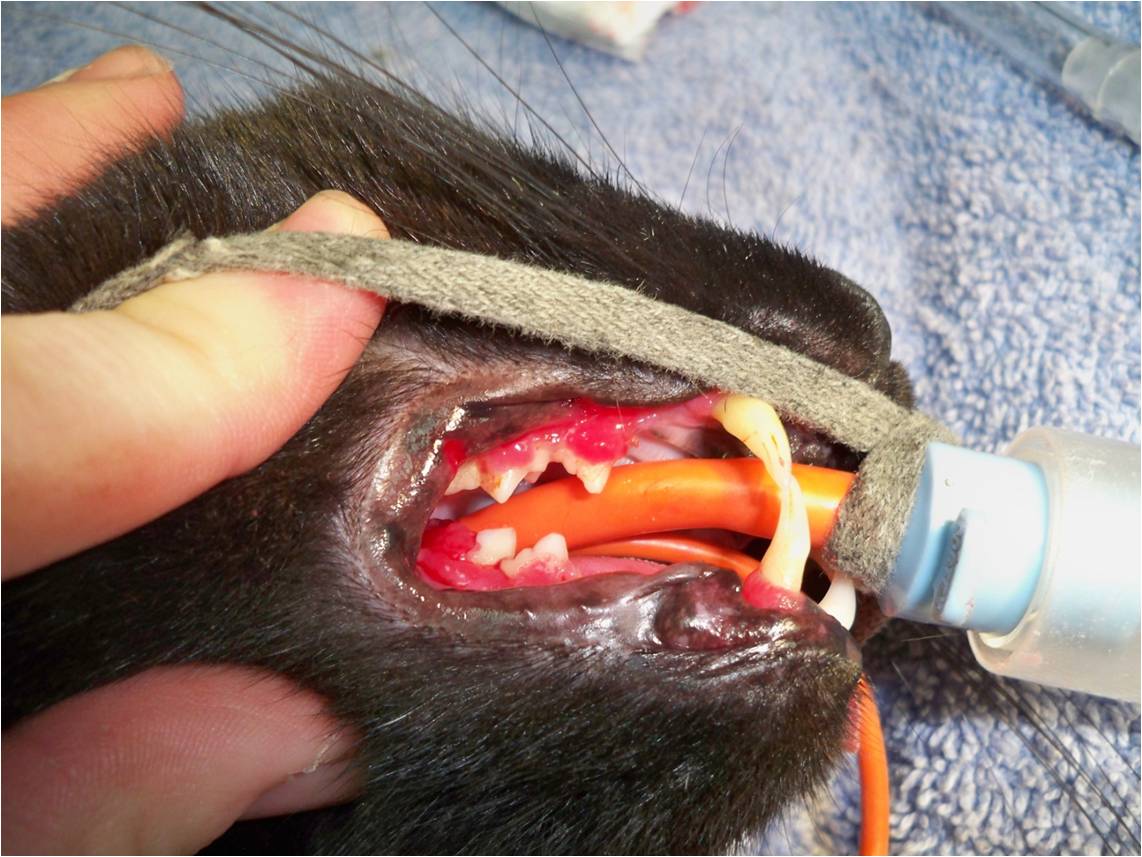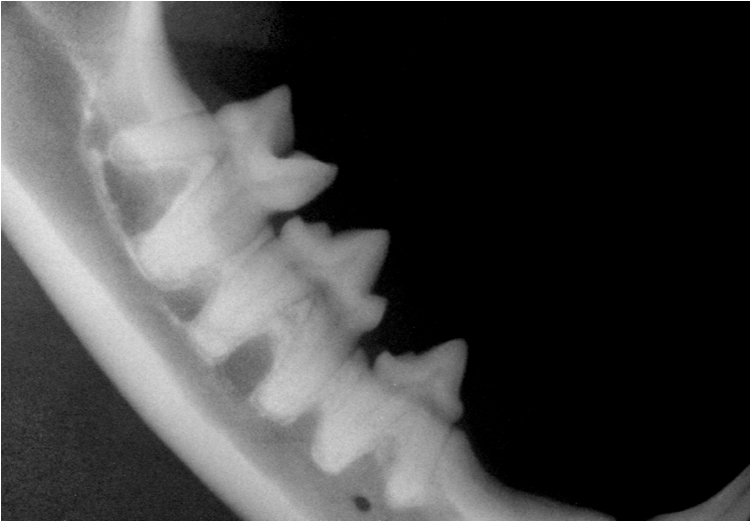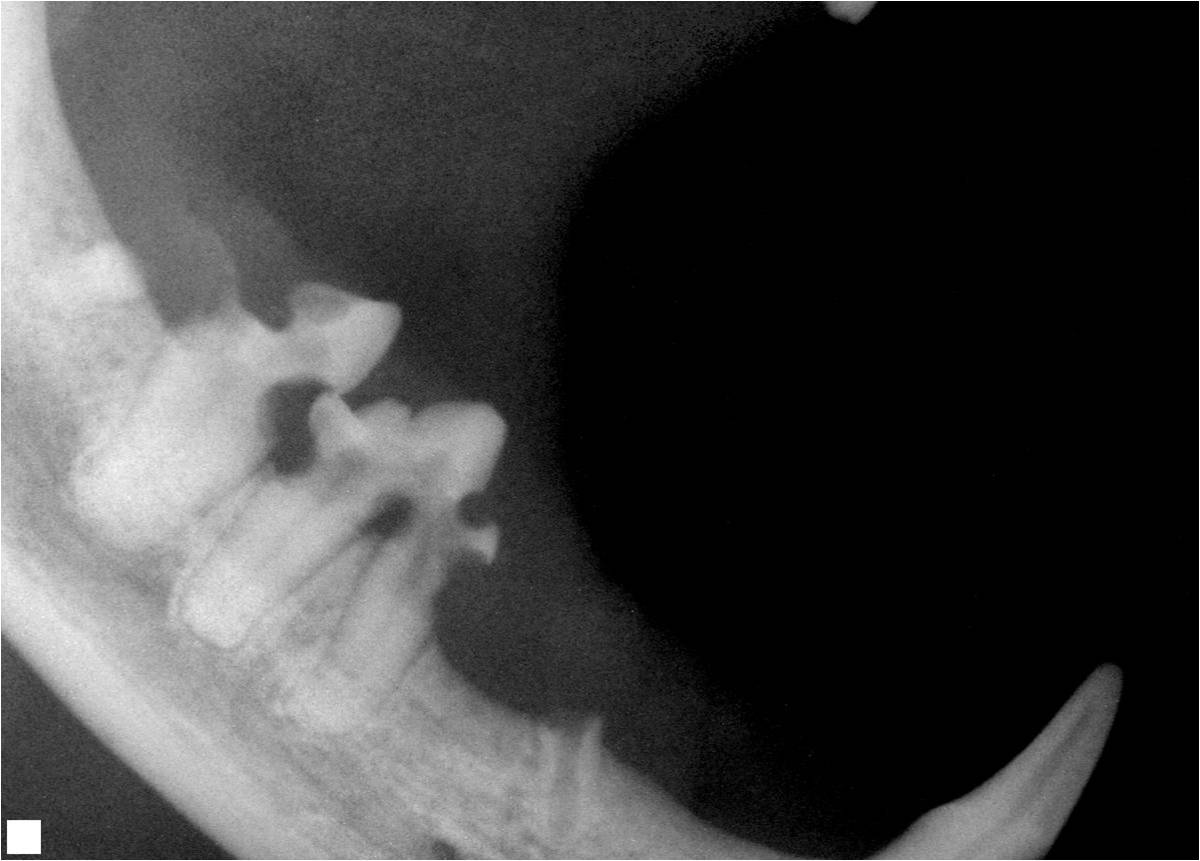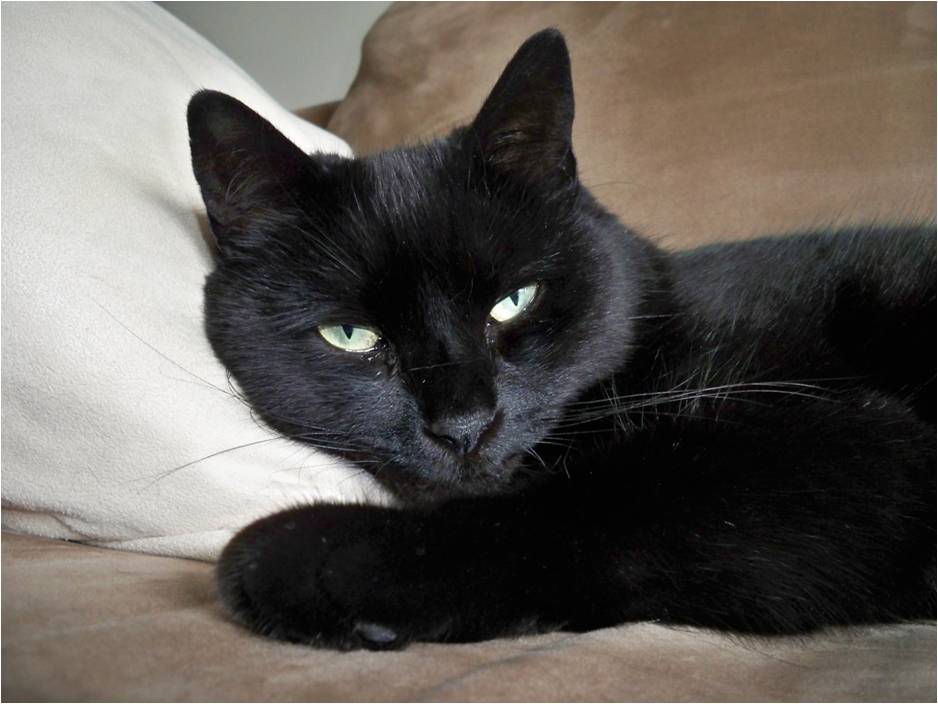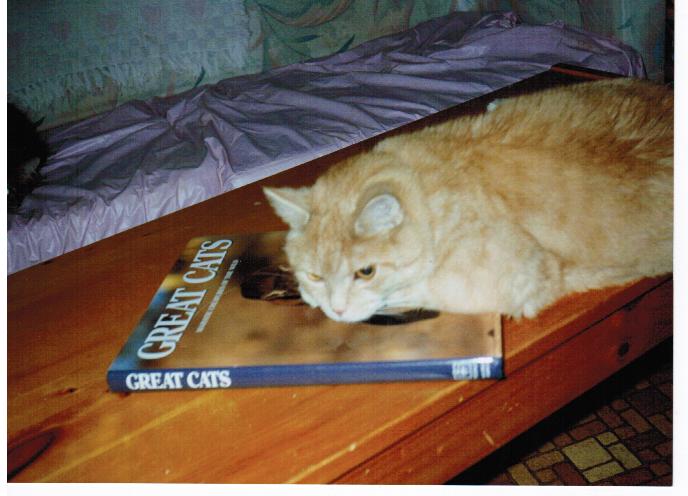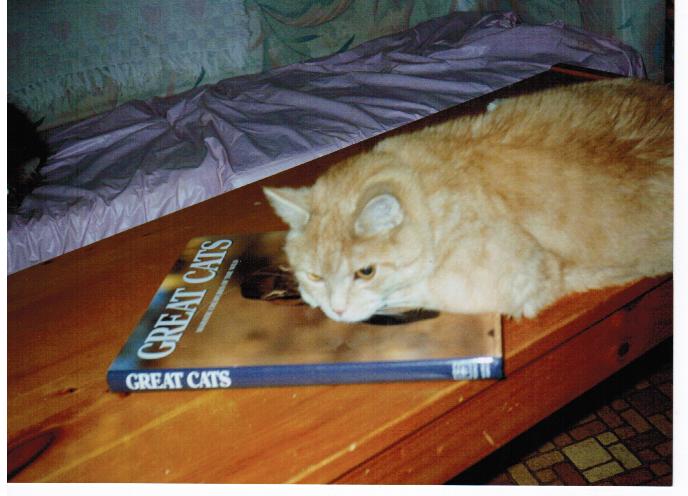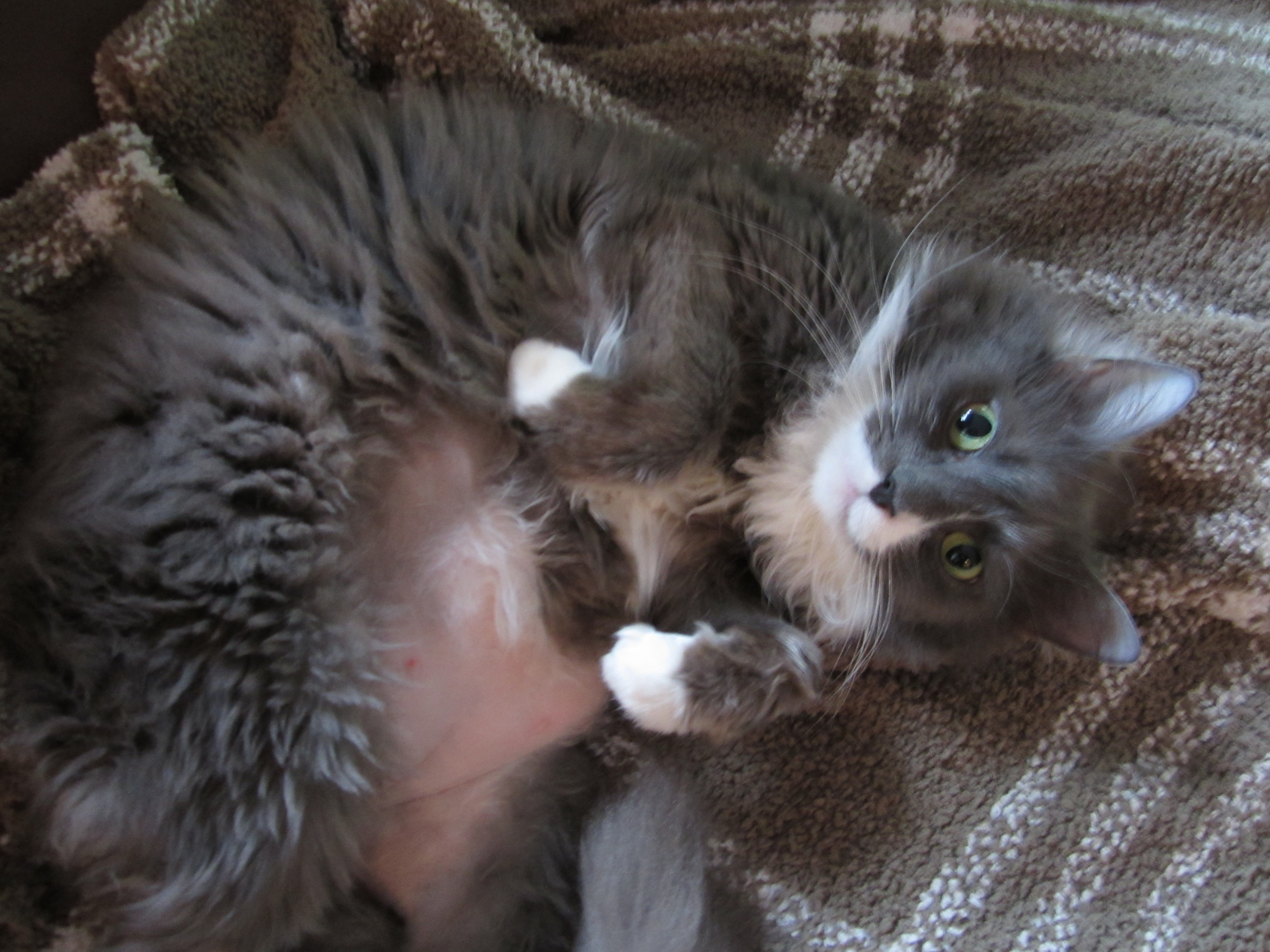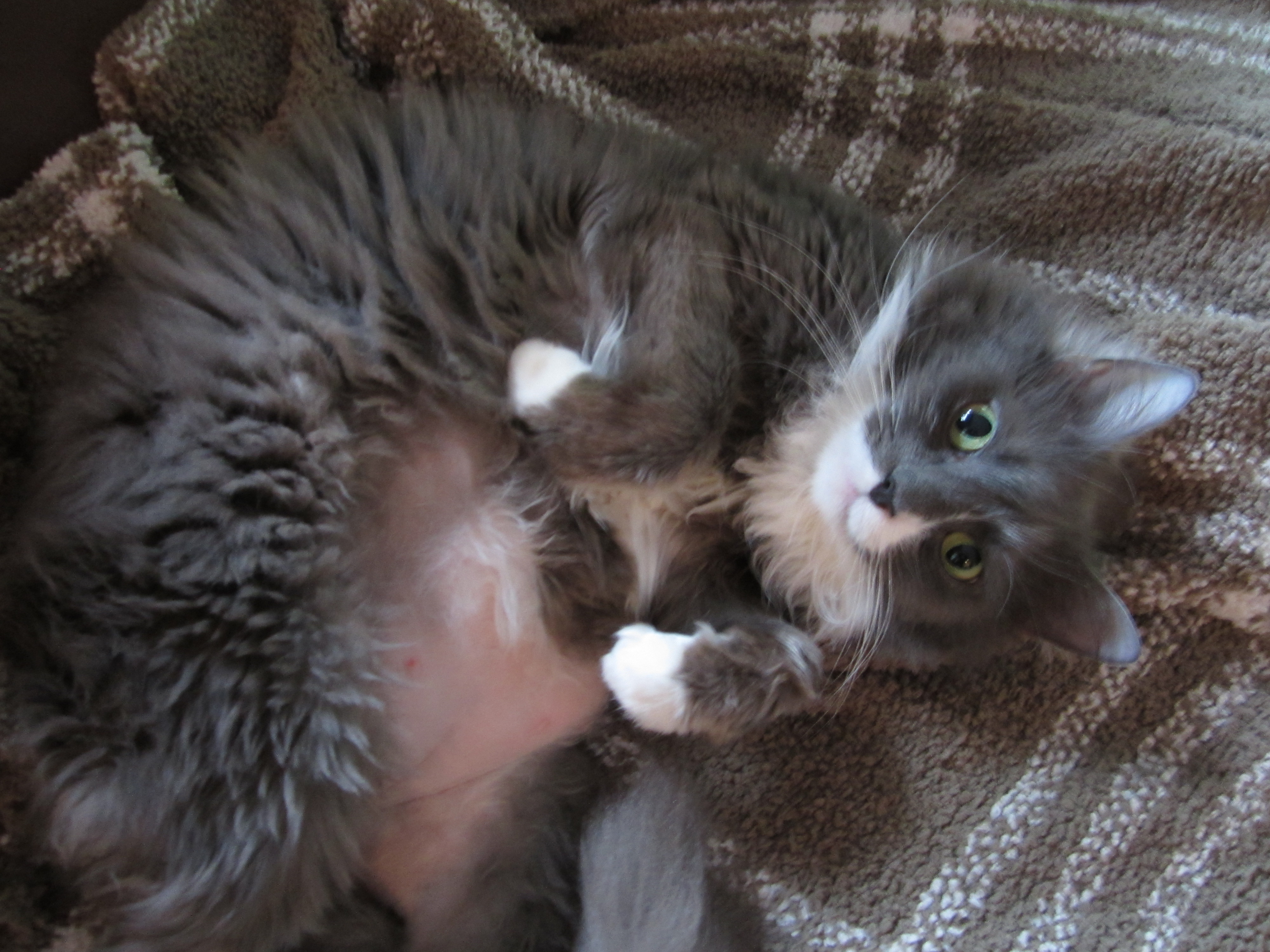NOT The Happiest Place On Earth!
Courtesy of: Cecelia
My cat, Tom, was one of a kind. He was my sweetie. Tom always showed his affectionate side for friends and family but he had another side too. That side he saved for visits to the vet. He hated coming to the vet hospital for his visits and I hated to take him.
I got Tom after working in a veterinary hospital for 2 years. I knew then (and still know now) that regular visits to the vet for health care are important to identify small problems before they became big problems. Tom’s regular vet care allowed him to live 18 wonderful years.
Tom was brought to Truro Vet when he was 4 months old to be ‘put to sleep’. He was a small ball of black fur with a white bib and dazzling eyes. It didn’t take long for him to win my heart and for the next 18 years he honoured me by being my cat. The only time I didn’t feel that honour was when I got out the carrier to take him to work with me for a vet visit!
Maybe it was his traumatic experience as a young kitten, being dropped off for euthanasia, or maybe it was that his life with me was so sheltered that any experience that was different was scary to him. Maybe it was the unusual and sometimes scary smells from other animals that I brought home on my clothing or maybe it was the famous feline ESP. However he knew, he understood what the carrier meant and he would go into evasive action the minute he saw it.
I tried many things to lessen the trauma for him. Some helped and some did not. Through the process of trial and error, I was able to lessen his anxiety. It seemed as I did things to lessen his worry, my worry decreased too and that made a big difference for both of us.
Tips to make your feline friend’s vet visit go purrfectly:
For some cats, a trip to the vet office is just an excuse to get a great back scratch and face rub, but to cats like Tom, it is a trip to hell.
Imagine the vet visit from a frightened kitty’s prospective. First, there is the hateful carrier. That box of containment that makes many cats run from the sight. Why? Some cats appear to believe that the carrier is going to eat them whole and they fight desperately to avoid the jaws (aka the door). Next comes the car ride. The trip in that smelly, noisy machine that rumbles and reminds them of the last time they were in the car…the last vet visit. It is not surprising that by the time that your cat makes it to the office, adrenaline levels are soaring for both the cat and their human companions.
Our pets are very empathetic. If you are stressed, so too is your kitty. Even an Academy Award winning performance cannot fool your cat. Our cats know us so well, they can see through the entire charade. Some people even feel that their cats can eavesdrop on the phone call to book the appointment! It’s true that many cats conveniently ‘go missing’ at their appointment time.
Thankfully with a little planning, there are several things that we can do to alleviate some of this stress.
- Start by choosing a day when you are not rushed and can feel a sense of calm.
- If possible, select a day when the weather is expected to be fine. Ideally, good road conditions make less scary noises in the car.
- When you call for an appointment, be open with us about any anxieties that you or kitty might have. An appointment booked at the start of your vet’s shift or at the start of appointments after a supper break can mean little to no waiting time and less interaction with other animals. We can also pre-arrange to have you and your cat escorted to an exam room immediately on arrival rather then waiting in the reception area.
- Have a cat carrier that can be easily dismantled so we can access your feline friend by removing the lid rather than dumping the cat out if she doesn’t want to come on her own.
- Place an old towel in the carrier. Sometimes stressed kitties going for a drive will lose control of their bladder and bowels. Absorbent bedding can make the clean up easier and preserve some of your cat’s dignity.
- Spray the carrier and blanket in the carrier with Feliway. Feliway is a product that is a pheromone (a scented hormone) that comes from cat’s facial glands. These glands produce a scent that has a calming effect on kitties. This can be used at home, in the carrier, car and vet office to ease stress.
- About two weeks before the visit, leave the carrier out near the area where you would normally feed your cat. Have the door open and place the food dish near the door. Gradually move the dish into the front of the carrier and then to the back of the carrier so that you kitty sees the carrier is a breakfast nook rather then big jaws.
- The day or two before the visit, trim your cat’s nails. This makes for a safer visit for everyone involved.
- Skip the meal prior to the visit and just use a few treats to get your feline friend into the carrier. Travelling with an empty stomach helps with car sickness and might motivate tolerance of gentle handling in the office. We have many treat types at the office but you might want to bring a few of her favorite treats.
- When you and kitty arrive at the vet hospital ask to be put into an exam room as soon as possible. Once in the room, open the carrier door and let your cat out to explore the room. Entice him with treats or toys. Catnip is not recommended. The effects of catnip can be unpredictable.
- If you have more than one cat to bring, don’t put them in the same carrier. Like people, at times of stress cats can redirect their frustrations and anxieties onto each other. Having separate carriers or preferably separate visits, for your kitties is a wise step to lessen the stress.
If you have questions about making your cat’s trip to visit us as stress-free as possible, please give us a call at 893-2341. Working together, we can all try to make your cat’s visit as easy and comfortable as possible.









